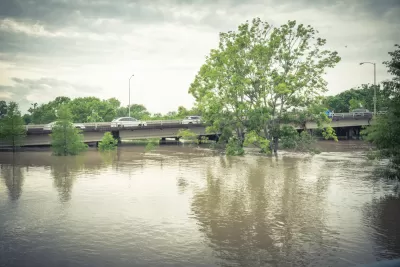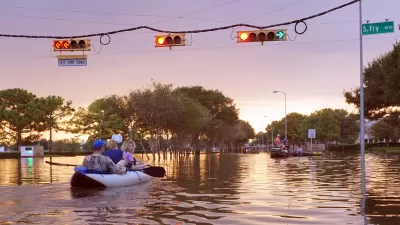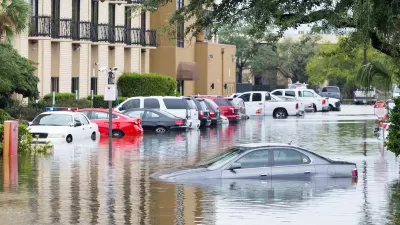The U.S. Army Corps of Engineers has revised a plan to protect the Houston region from flooding by tossing out a proposed tunnel and opting instead to dig Buffalo Bayou wider and deeper.

The U.S. Army Corps of Engineers on October 5 released an interim feasibility report that revised plans to address flooding in Houston, evolving a project launched in the wake of Hurricane Harvey.
Shawn Arraj reported on the news at the time of the interim report's release, noting that the Army Corps had decided against a building a network of underground tunnels leading away from the (Addicks and Barker) reservoirs.
The Army Corps dropped the plans for tunnels because of costs. "Initial cost estimates for the tunnels ranged from $2.2 billion-$12 billion," according to Arraj.
Given the lessons of Harvey and the critical importance of floodwater protections in the face of increasing numbers of extreme weather events, the Army Corps plan is still a frequent topic of discussion in the local news media—and the Houston Chronicle has run two article recently sharing the opinions of local stakeholders critical of the Army Corps' approach to stormwater resilience in the area.
The decision to dig the Buffalo Bayou wider and deeper is the subject of a recent article by Emily Foxhall, who focuses on the criticisms of conservationists who say the new plan reflects old-fashioned thinking at the Army Corps, and call for a nature-focused approach to resilience.
"People puzzled over why the Corps wasn't continuing to look at tunnels, considered less disruptive to communities, or excavating more dirt from the Addicks and Barker reservoirs, maybe building a new park space on top," writes Foxhall.
Another article by Lisa Gray provides an in-depth interview with Jim Blackburn, the co-director of the SSPEED Center at Rice University. When asked for an assessment of the report, Blackburn says it might have been a stroke of genius for riling up so much of the community. "It caused the community to really take this under their wing in a way that they may not have done otherwise," says Blackburn in the interview.
Public feedback on the October interim feasibility report is expected to help the Army Corps decide on a final proposal. The Harris County Flood Control District would need to approve the majority of funding for whatever project comes to fruition. Congressional approval will also be necessary.
FULL STORY: Digging Buffalo Bayou deeper? Houstonians up in arms over Army Corps' 'old-fashioned' flood fixes.

Study: Maui’s Plan to Convert Vacation Rentals to Long-Term Housing Could Cause Nearly $1 Billion Economic Loss
The plan would reduce visitor accommodation by 25,% resulting in 1,900 jobs lost.

North Texas Transit Leaders Tout Benefits of TOD for Growing Region
At a summit focused on transit-oriented development, policymakers discussed how North Texas’ expanded light rail system can serve as a tool for economic growth.

Using Old Oil and Gas Wells for Green Energy Storage
Penn State researchers have found that repurposing abandoned oil and gas wells for geothermal-assisted compressed-air energy storage can boost efficiency, reduce environmental risks, and support clean energy and job transitions.

Private Donations Propel Early Restoration of Palisades Playground
Los Angeles has secured over $1.3 million in private funding to restore the Pacific Palisades playground months ahead of schedule, creating a modern, accessible space that supports community healing after recent wildfires.

From Blight to Benefit: Early Results From California’s Equitable Cleanup Program
The Equitable Community Revitalization Grant (ECRG) program is reshaping brownfield redevelopment by prioritizing projects in low-income and environmental justice communities, emphasizing equity, transparency, and community benefits.

Planting Relief: Tackling Las Vegas Heat One Tree at a Time
Nevada Plants, a Las Vegas-based nonprofit, is combating the city’s extreme urban heat by giving away trees to residents in underserved neighborhoods, promoting shade, sustainability, and community health.
Urban Design for Planners 1: Software Tools
This six-course series explores essential urban design concepts using open source software and equips planners with the tools they need to participate fully in the urban design process.
Planning for Universal Design
Learn the tools for implementing Universal Design in planning regulations.
Ascent Environmental
Borough of Carlisle
Institute for Housing and Urban Development Studies (IHS)
City of Grandview
Harvard GSD Executive Education
Toledo-Lucas County Plan Commissions
Salt Lake City
NYU Wagner Graduate School of Public Service




























